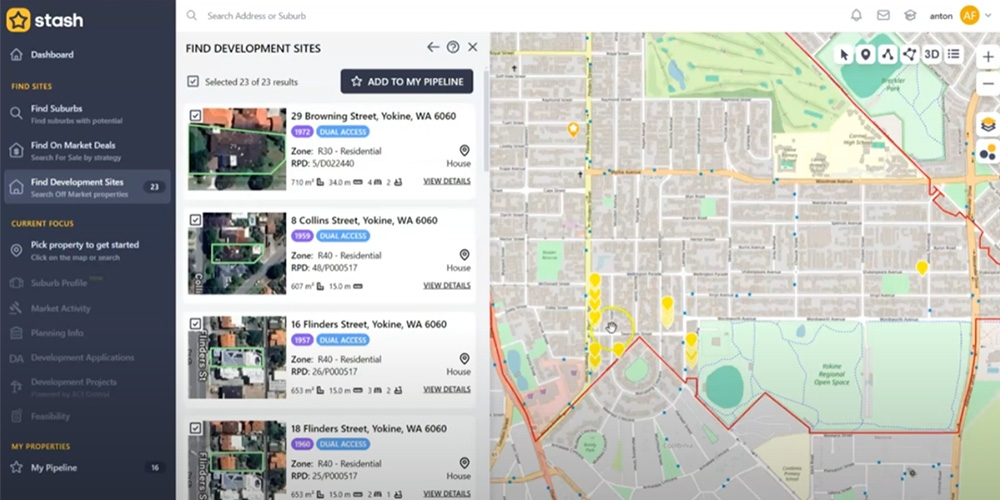
When the WA border re-opens, what will happen to the Perth housing market?
It would be an understatement to say that the COVID pandemic has had some interesting impacts on global markets.
The effect at home has been varied – Perth has arguably benefited in many areas. The explosion in housing market activity nationally has been covered by the Australian media extensively. At the announcement of the pandemic this was the last thing I and many others property enthusiasts would have predicted.
Here we are, two years later with a voracious appetite in all state markets for housing. Nationally, the annual average is tipped to hit 16 percent growth. If one considers that this is a median only, that is a spectacular, or some would say scary, rate of growth in such a short period. And it doesn’t seem to be slowing down any time soon. With cheap money everywhere and a net uplift in equity and borrowing capacity for millions of Australians, spending and consumer confidence is high. It is fair to say that the cat is out of the bag and the market is running.
As Australia approaches vaccination targets the rhetoric of politicians and immigration officials has changed in the past few months. The question is no longer if we are letting people into the country and cross borders, but when. The question is, what will happen to the property market here when this occurs?
Property developers in Perth, like other major cities in the world, rely on growth in population and housing demand to fuel demand for their projects. Stimulus packages have already had a spectacular impact on the demand for new dwellings in the short term. There have been associated pricing escalations and supply chain shortages in all building industries. Many builders are struggling to supply the market with product for these reasons. Is this the new norm, or will this change?
To form an opinion on this question, I consider the following points when considering whether or not this market run will continue or bubble up and bust soon. Do we keep developing?
- As vaccination rates increase, some workers will return to normal working arrangements – This will predominately impact commercial property. There has already been an uptake in lease space for all commercial properties including office space. This has been noted by commercial lessor JLL who reported that of in tenants who have moved in over the first 6 months of this year, almost half of these have now signed on for additional space. Keeping city workers in the city will have an impact on the demand for inner city living.
- Working from home (WFH) is here to stay – The working from home trend is most notably the lasting legacy of the pandemic. Psychological and lifestyle benefits aside, many businesses, and many workers, prefer the model. Notably, it is likely to have an impact on the demand for CBD living – in favour of regional areas based on lifestyle an affordability. Inner CBD housing has seen the strongest growth in all capital cities in Australia in the last 12 months. However, economist Paul Ryan from PropTrack has correctly pointed out that growth in regional areas is an indicator that many workers are favouring a lower mortgage and a larger home as they maintain their WFH status. In fact, of Perth’s Inner city workers 43% are estimated as a proportion to be able to work remotely (Proptrack, Dingel and Neiman 2020). One might conjecture that based on these statistics; uptake of regional housing stock is an area that is likely to grow.
- Immigration is set to rise – When Australia opens its borders, Immigration is set to return to pre pandemic levels. I estimate that that application volumes will be higher. This will be based on a desire for lifestyle and access to a passport to a country which largely escaped much of the impact of the pandemic. It would be foolish to think that affluent citizens in other countries would not want to safeguard against a future pandemic. As far as Western Australia is concerned, our lifestyle became the envy of the world in the last two years. As immigration rises, so will demand for housing. Interestingly, there are visa streams that grant permanent residency for entire families (a pathway to citizenship). The requirement to buy a place of residency in the state where the application is made is mandatory for most of these visas. It is my prediction that where safety of one’s family is as stake; price no longer remains a determinant. Immigration will further fuel price escalations in both ends of the local property market.
- Instability in Chinese housing market – The spectacular and imminent collapse of building and development Mega corporation Evergrande is still unfolding and will have more impact than just locally. Most importantly, the housing boom in China was driving a large part of its local economy. Whilst many pf Chinas working class will lose savings, the important impact for Australians will come from Chinas wealthy property speculators. It seems probable that confidence and investment in Chinese property will decline amongst this contingency of affluent Chinese. Naturally, eyes will turn elsewhere for investment. Safer, premium property markets like Australia and Singapore are likely to bear the brunt, or benefit, of this attention.
So what’s going to happen?
Although there are some sceptics about the ongoing sustainability of the growth, we are seeing in the Australian property market many signs that point in one direction only – Growth. Whether this is sustainable is open for conjecture. The bull is running, and I cannot see an end in sight.
I suspect that there will be a redistribution of traditional ‘buyer’ populations thanks to a decline in housing affordability.
Inner city living will continue to command a premium, perhaps exorbitantly so – with rents to match.
The biggest winner may be our regional areas, where lifestyle and affordability will be attractive to many purchasers. The growth of amenity and affluence of these suburbs will come as a natural by-product over time – Maybe it’s better to get in early.
Who knows, one day someone might even have to move back to Wittenoom to buy a house.
One thing is I have learnt from this pandemic is that anything is possible.
See how we can help make your subdivision more successful.
When you need a little (or a lot) help with your property development, remember we’re here to help. An hour or two of a professional consultants time can be very helpful, particularly if your own research has taken too long or you are not sure you even have the right answer to your questions.




